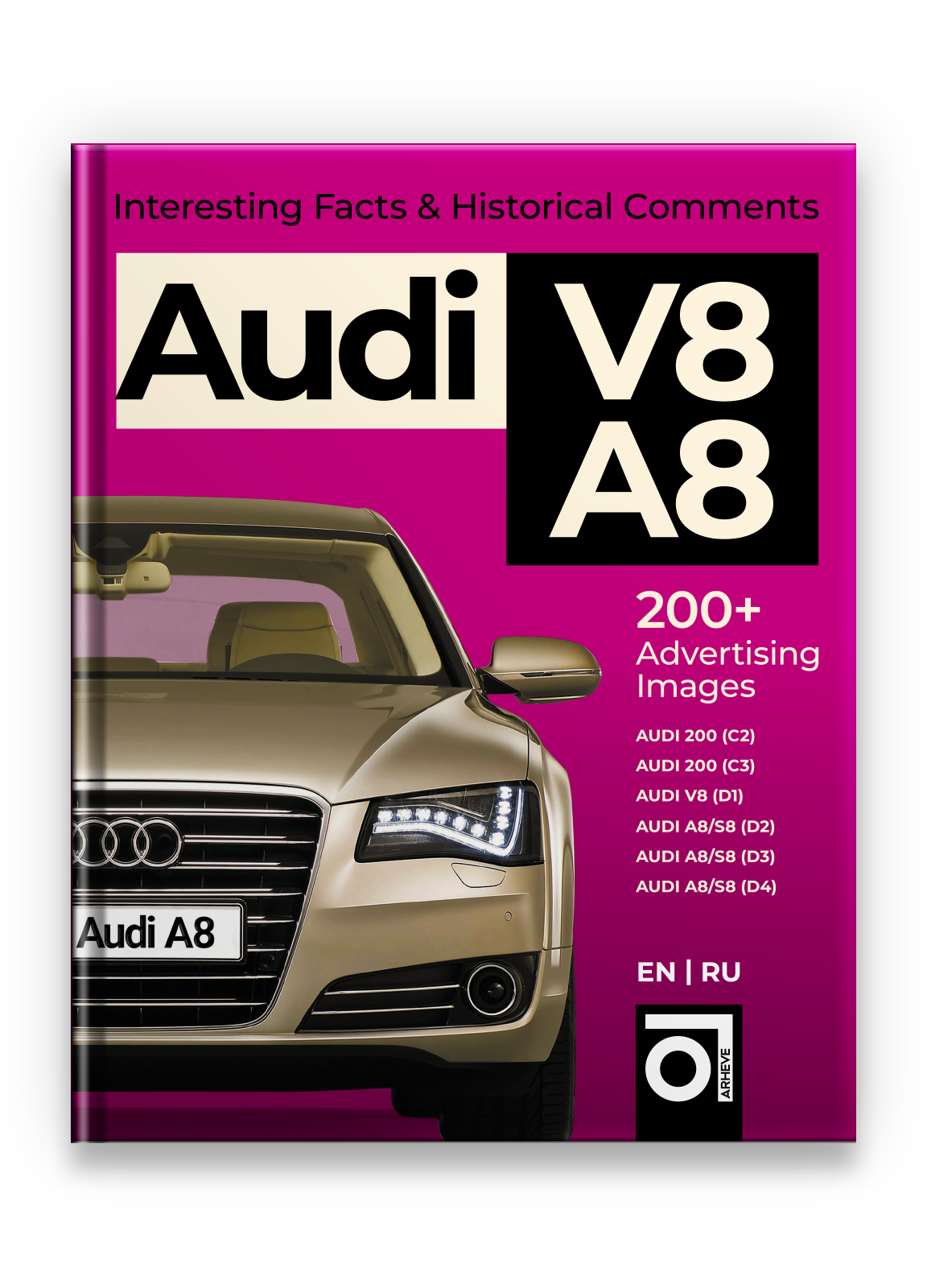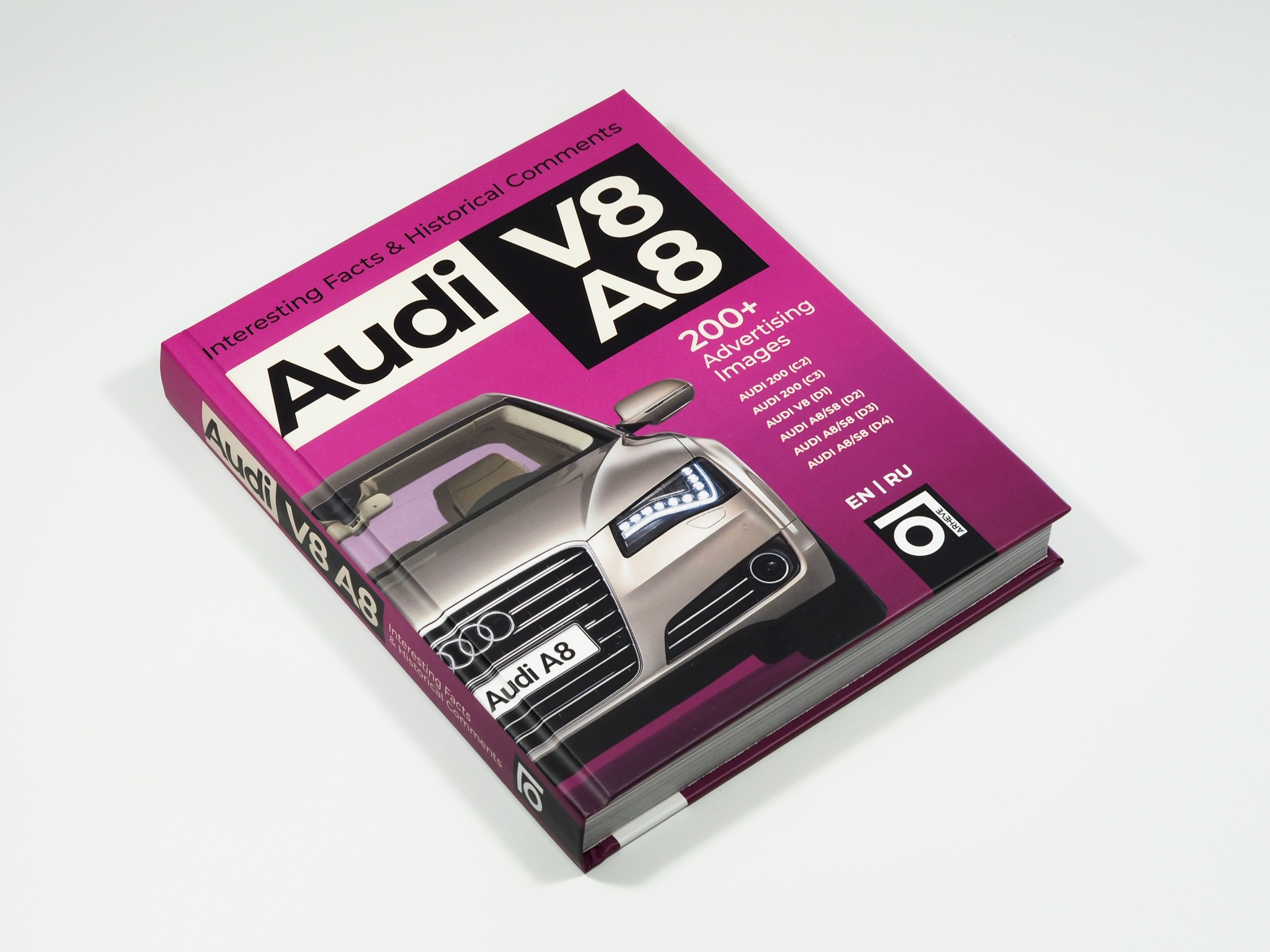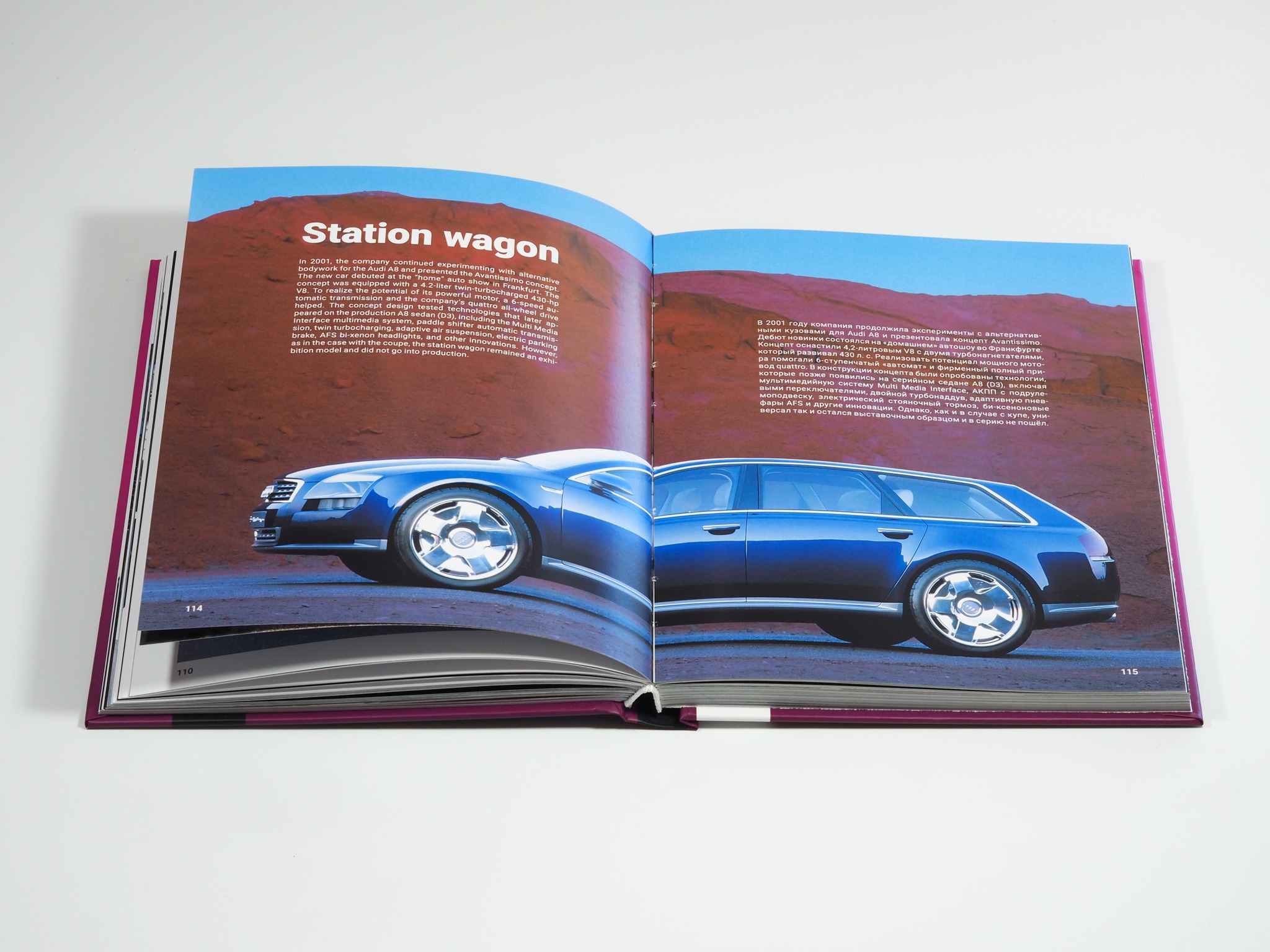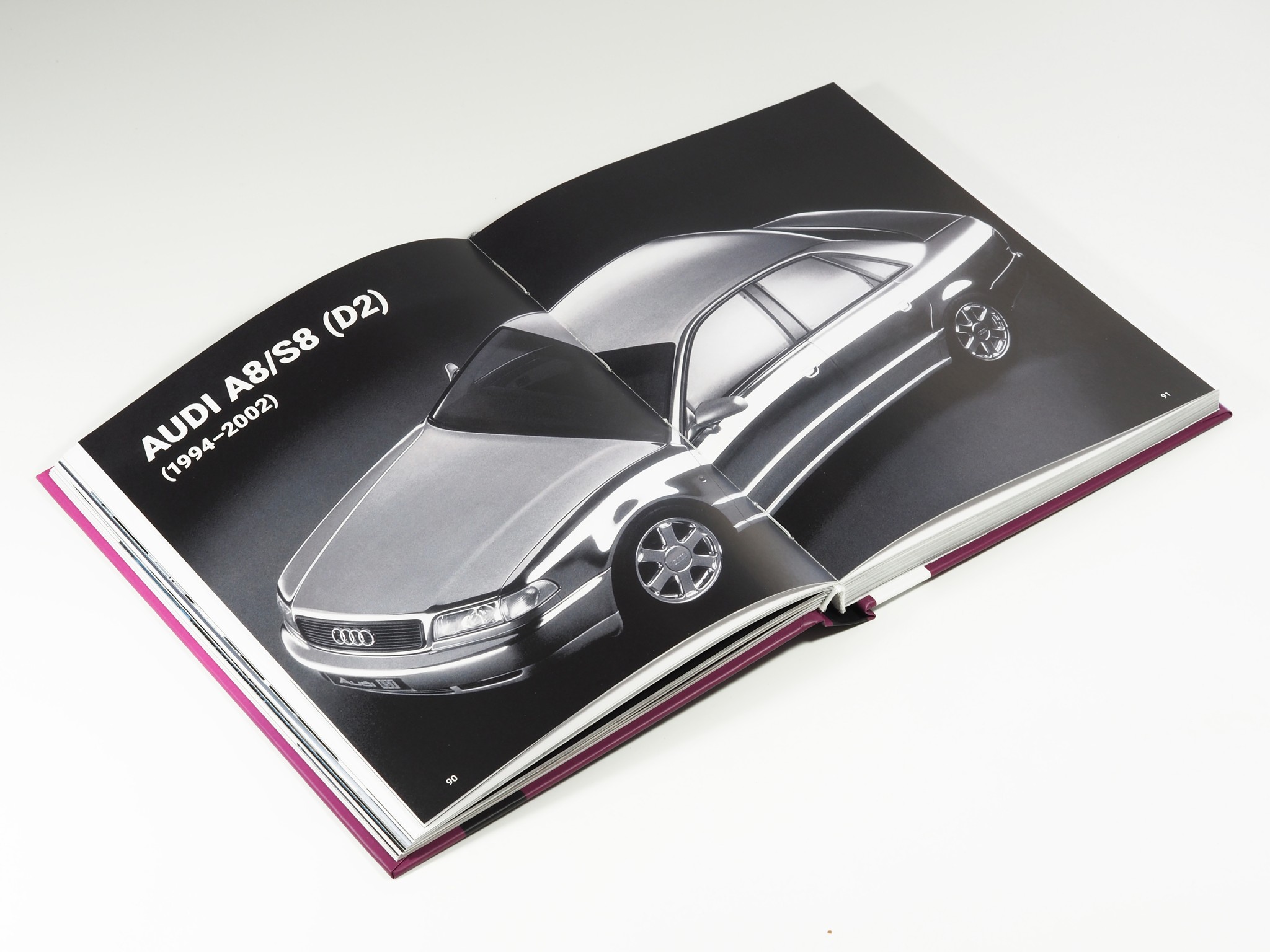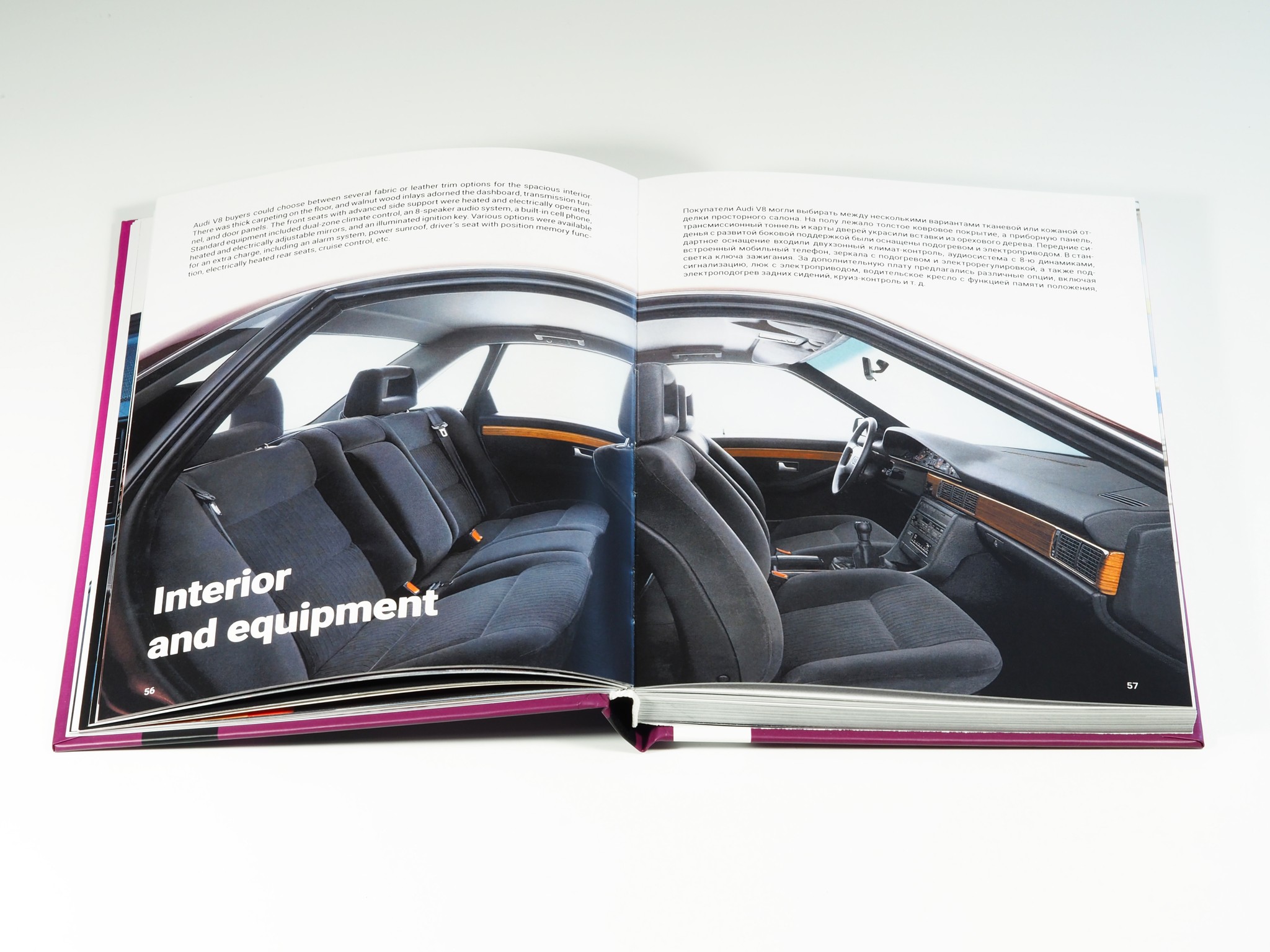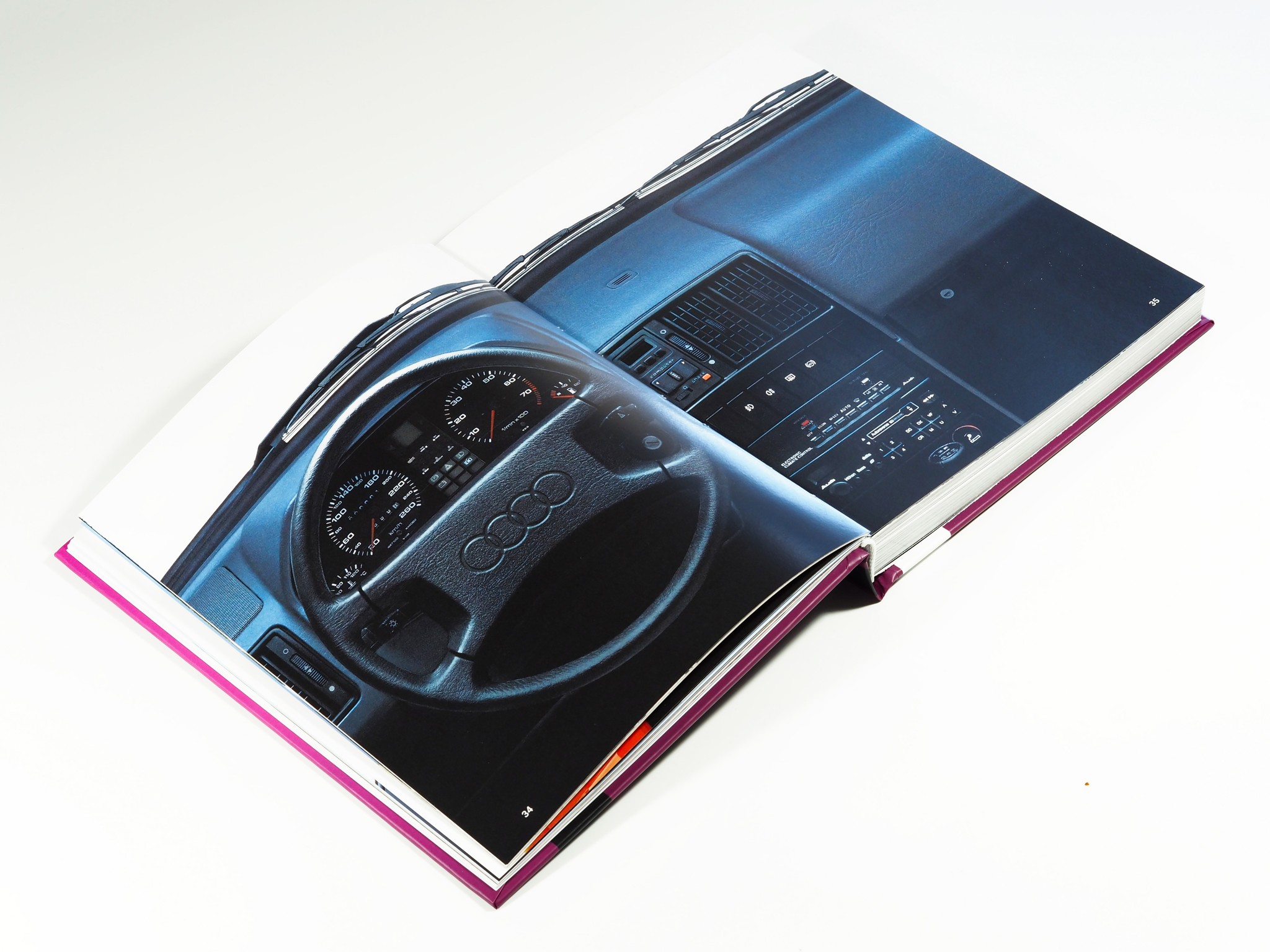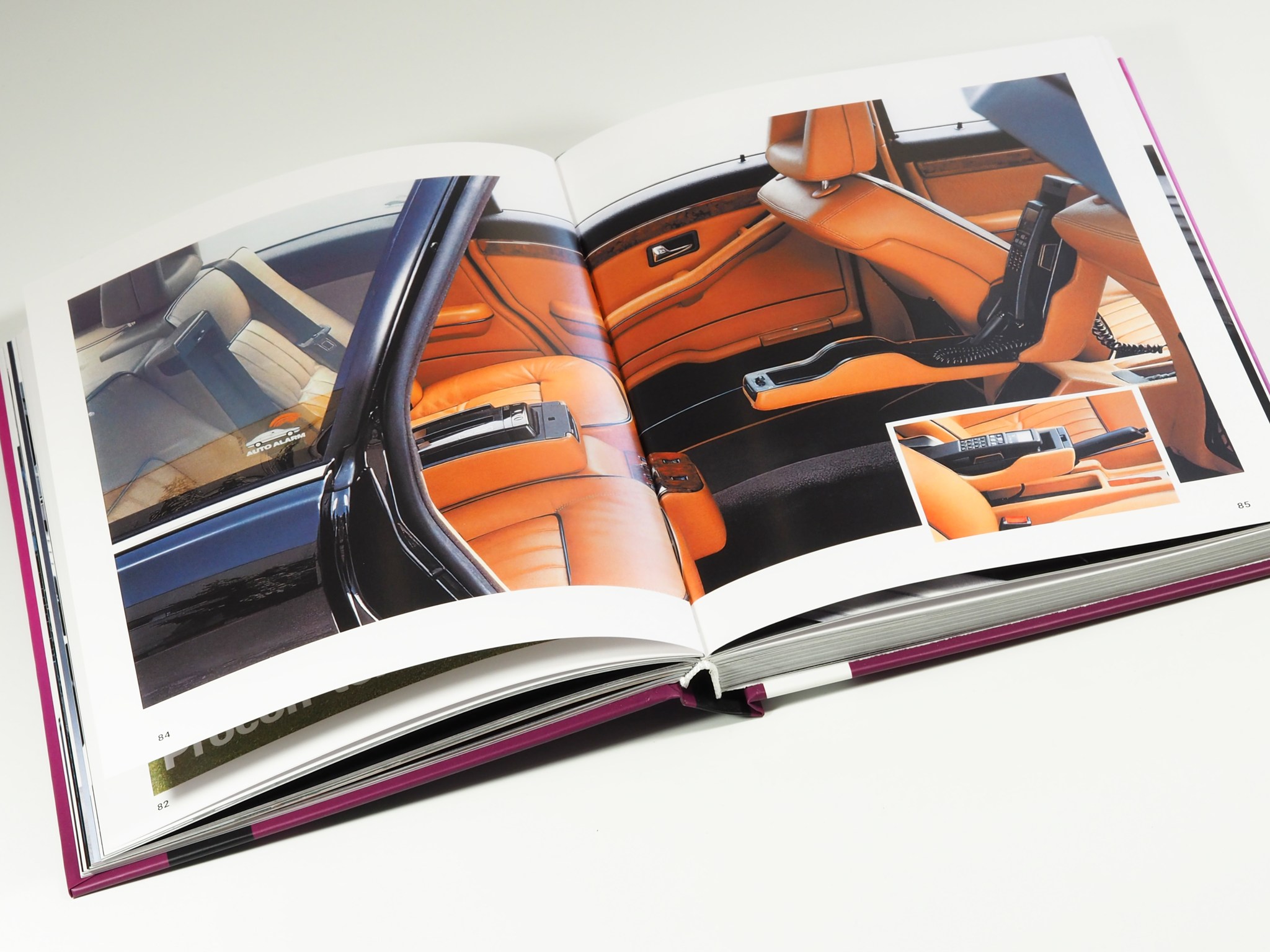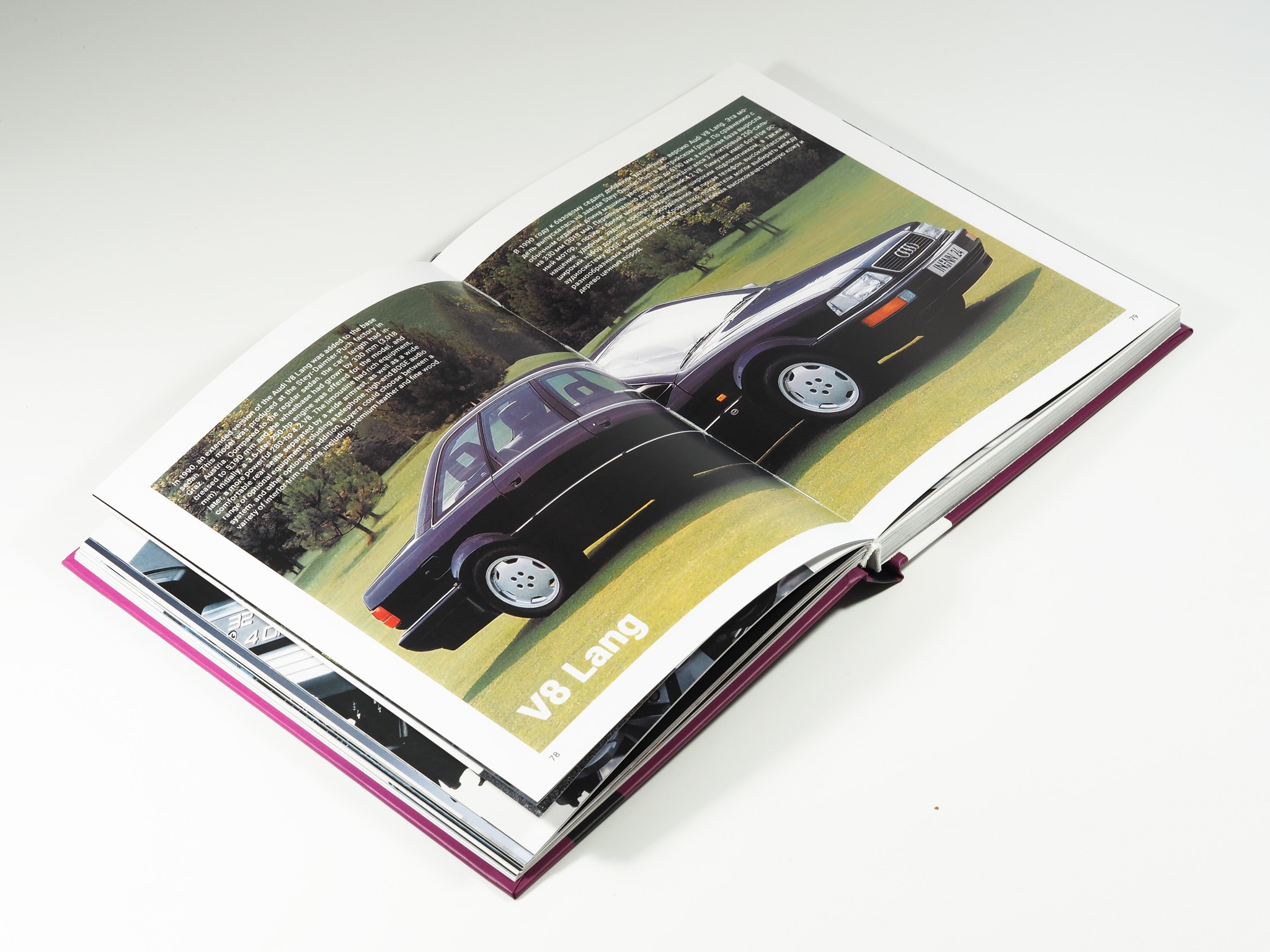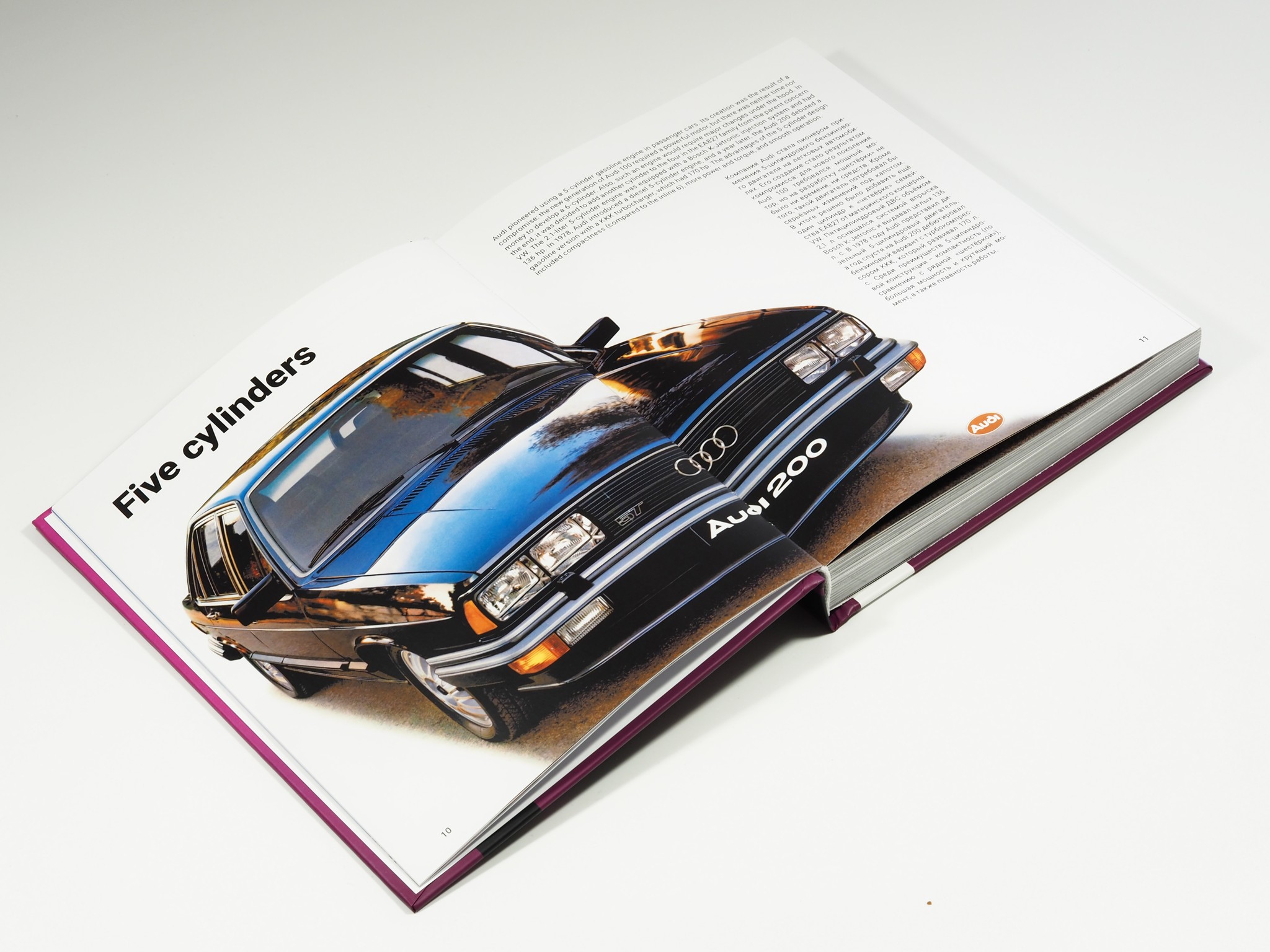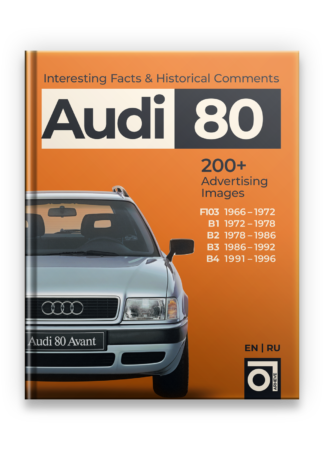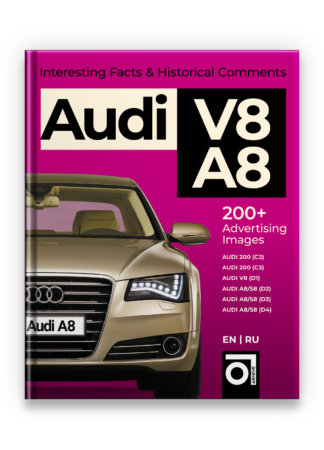Description
Audi V8 A8 Hardcover book (fragment of the text)
In the post-war period, the German automobile consortium Auto Union, formed in 1932 when four companies united – Audi, DKW, Horch, and Wanderer – was experiencing serious difficulties.
Market volumes were small and competition was high, and by the early 1960s, the question of moving “under the wing” of a larger automaker had come up. So in 1964, Volkswagen began the process of buying Auto Union, and it was finalized two years later.
In March 1968, an agreement was also signed to merge Auto Union with NSU, resulting in Audi NSU Auto Union AG on January 1, 1969. In parallel with these important transformations, the Auto Union design office began work on a new model. In order not to be associated with the not quite successful previous cars, it was decided that the new car would be released not under the brand Auto Union, but under the glorious brand Audi, which was destined to be the successor of premium models of pre-war years.
Audi’s renaissance began in 1965 with the debut of the F103 family, which became the basis for iconic models such as the Audi 80, Coupe, and the legendary Quattro.
Audi’s first post-war model was well received by the general public and experts, but this success had to be built on. Therefore, head of Auto Union Rudolf Leiding and chief designer Ludwig Kraus decided to expand the model range and offer customers a more prestigious model with a powerful engine and rich equipment.
Work on the flagship in the Audi design office was conducted in complete secrecy. When Volkswagen representatives accidentally saw the prototype of the future model, they were so impressed that they even wanted to organize its production under their own brand. However, the Auto Union leadership managed to defend its development rights and got approval to produce the car under the Audi brand.
The Audi 100 made its debut on November 26, 1968, a month after Audi founder August Horch celebrated his 100th birthday. Surely the talented inventor and entrepreneur would be proud of Audi’s new brainchild.
The new car was a success both at home and abroad: in March 1971, the company celebrated the production of the 500,000th car. And a new milestone was reached in 1976: the two millionth car came off the assembly line, and more than 800,000 of them were the first generation Audi 100.
In 1976, the second generation of the Audi 100 was presented, and later the Audi 200 sedan appeared, which became the basis for creating the future V8 model. For the first time, Audi cars were able to stand up to competitors such as Mercedes-Benz and BMW, and the “Big German Two” became the “Big German Three”.
In August 1976, the second generation Audi 100 (C2) was presented, and in April 1977, production began of the most powerful version with a 5-cylinder injector engine with 136 hp.
Demand for the new car was so good that the company’s management decided to offer a more expensive version with a wide range of basic options and rich trim. So in 1979, the flagship model Audi 200 appeared in the lineup for the first time.
Read the continuation of Audi V8 A8 story in the book.
Other books about history of Audi:
